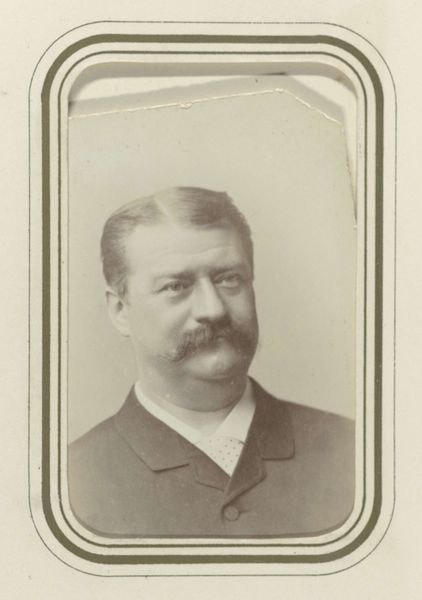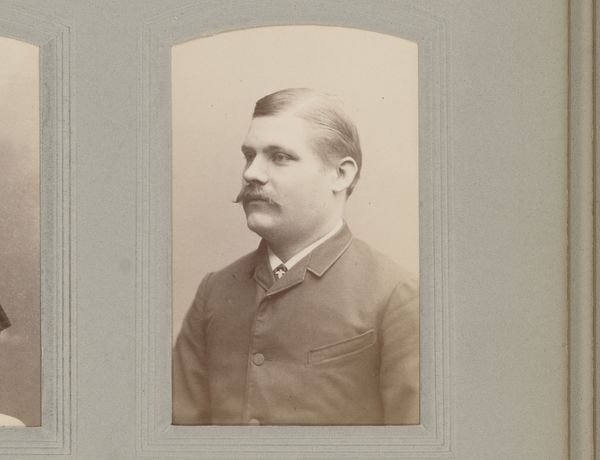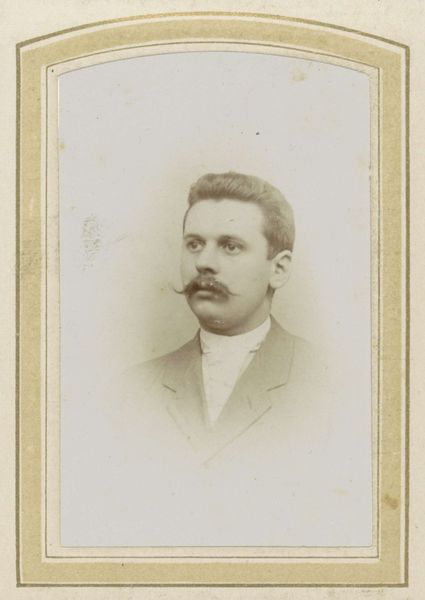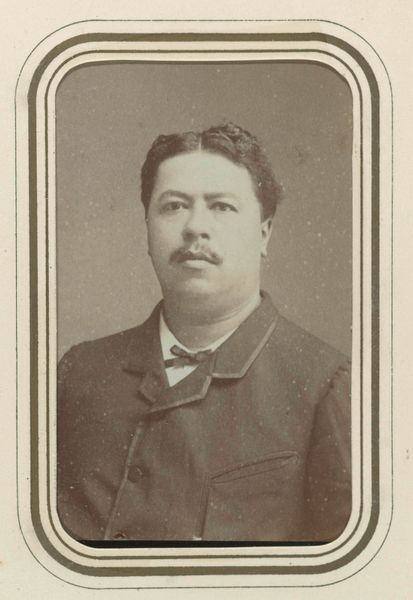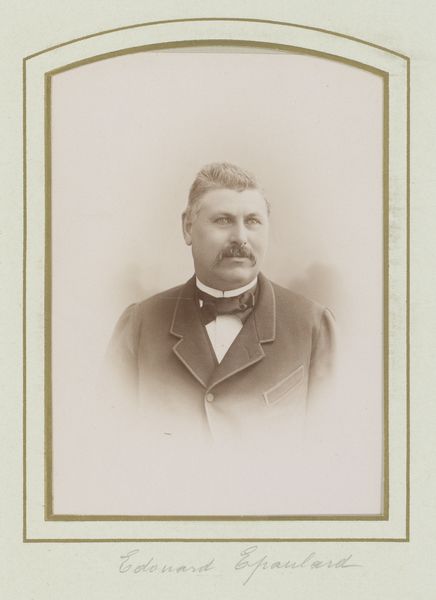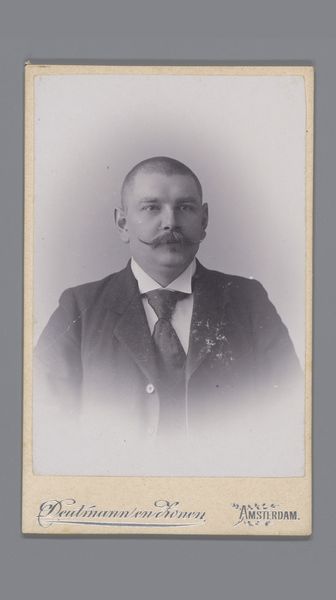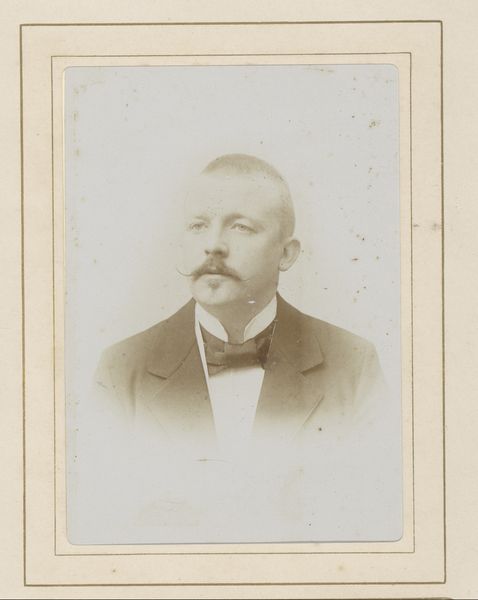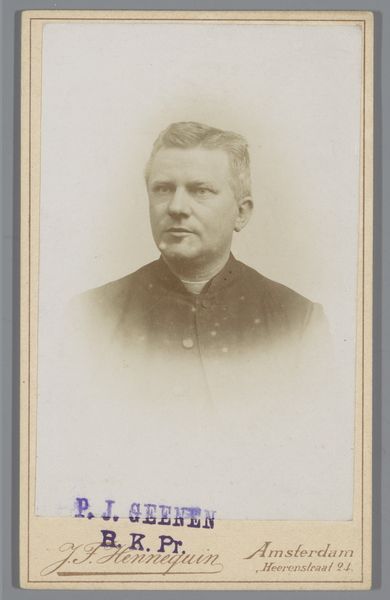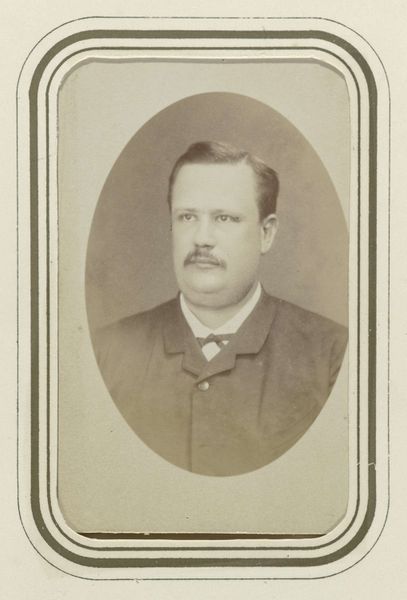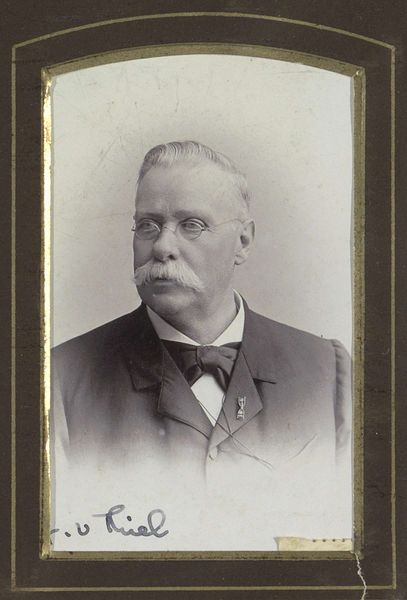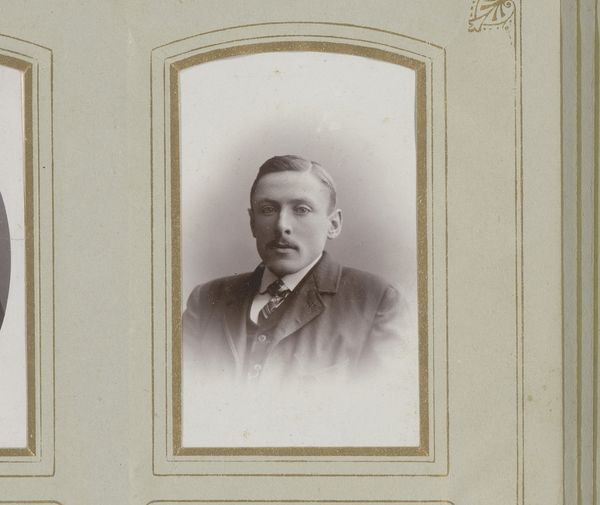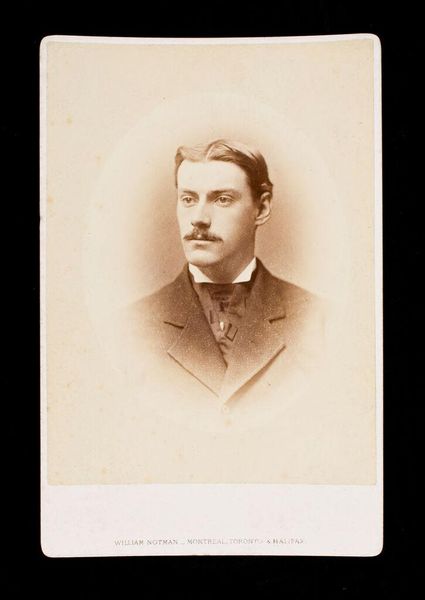
photography
#
portrait
#
portrait
#
photography
#
academic-art
#
poster
Dimensions: height 96 mm, width 64 mm
Copyright: Rijks Museum: Open Domain
Editor: This is "Portret van Luitenant-kolonel J.G. van Thiel," a photograph by Adolphe Zimmermans from before 1891. It feels incredibly formal, doesn’t it? Almost like an official document. I wonder, what can we unpack from this particular portrayal of military authority? Curator: This photograph offers a glimpse into the constructed image of military leadership during a period of significant social and political transformation. Note the meticulously maintained mustache, the sharp lines of the jacket, the gaze directed right at the viewer. These were all elements deliberately chosen and carefully composed to project authority, competence, and, ultimately, to inspire confidence in the colonial project and the military as a whole. Editor: So, it's about projecting an image for public consumption, not necessarily capturing the "real" person? Curator: Exactly. Consider the role photography played at the time. It wasn't simply about capturing reality but about shaping it. These portraits were often displayed publicly or distributed within military circles, reinforcing hierarchies and promoting specific ideals of masculinity and national identity. Ask yourself: What is omitted, and who is doing the omitting? Editor: That makes a lot of sense. It seems like a very conscious construction of power. I hadn't really thought about photography in that light before, always just as a recording medium. Curator: The politics of imagery were particularly important at that time. Photography could be used both to legitimize power and to challenge it. This is what makes this portrait so interesting: it reveals how carefully curated the image of the military leader was. Editor: This was an interesting way to see beyond the simple subject matter. It's like looking at propaganda or advertising; thank you. Curator: Indeed! Remember that even seemingly straightforward images can be deeply embedded within complex socio-political landscapes. Analyzing these images is how we reveal power structures that continue to exist.
Comments
No comments
Be the first to comment and join the conversation on the ultimate creative platform.

